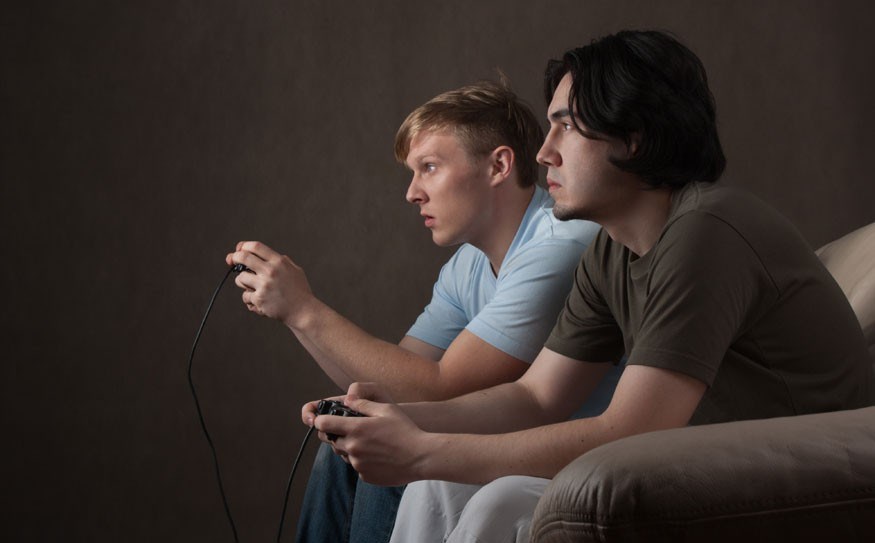Kids who stay inside playing video games all day may not be wasting their lives after all. Competitive gaming, or eSports, has been around in one form or another since the first High Score, but in recent years the stakes have gone up quite a bit — enough that it actually makes sense for people to stay home and practice if you're any good at it.
Take League of Legends, the massive online battle arena-slash-real time strategy (RTS) juggernaut by Riot Games. The regular season prize pool for the title is an astonishing $5 million, split between the top teams from regions around the globe. The championship prize pool, in which the best of the best will battle it out for, puts another $3 million.
League of Legends is a perfect example of what competitive gaming can be. Players join teams and hopefully pick skills that complement one another, although you generally pick one of the 94 different characters that fits your style of play — offensive, defensive, supportive, hack-and-slash, big and strong, small and fast, ranged battle, magic battle — there's really a huge variety of options.
Players control these characters, called Champions, as well as legions of minions — small, weak players that can be used to overwhelm and distract champions with different tasks. There are special items and runes to collect, and you can upgrade your champions through the typical skill trees. Best of all it's free to download and try, although if you decide to take it more seriously you're encouraged to spend real money on Riot Points that you can use to unlock different champions or other in-game perks.
The games are long and big on strategy, and with 32 million people around the world downloading the game you'll never run out of people to play with. Visit www.riotgames.com for more. If you're not sure, the website lets you spectate games in progress.
If League of Legends is the new kid on the block, the big kahuna of competitive games is the original Starcraft. Especially popular in Korea — the top players athletes, of a sort. They can win games in mere minutes, with fingers flying over their keyboards. The top players, all sponsored, can do up to 300 actions per minute, or five actions per second using shortcuts.
Starcraft II still has a lot of catching up to do, but there's about $4.5 million on the table this year for the top players.
Even Vegas is getting into the action, allowing more people to bet on online gaming and hosting competitive gaming tournaments.
There are tournaments for everything, from sports games to racing games to first person shooters. At one point the top Halo prize, shared among a team of four players, was $1 million, and that was only at the tournament finals.
For the most part the competitive gaming world is untamed, although there have been a few attempts to try and unify all the circuits out there. The top North American organization is Major League Gaming (www.majorleaguegaming.com), which focuses on games like League of Legends, Starcraft II, Mortal Kombat and others. GameBattles, a partner of MLG, focuses more on first person shooters and sports games, like Halo: Reach and FIFA 12.
Every credible video game site carries news about the world of competitive gaming, including Joystiq (www.joystiq.com) and Kotaku (www.kotaku.com).
RIM: Down, but not out
Every week another story reports the death of Blackberry, yet Canada's tech pioneer still lives and, more importantly, isn't ready to concede anything yet. Despite declining handset sales and lukewarm reception for the Playbook, the company is continuing to innovate and recently let developers get a look at its next project — the Blackberry 10, a touch-screen phone based on the company's latest upgrade to the QNX operating system.
Some of the features have blown developers away, like a new photo device that lets you select a portion of the photo and go forward and backward in time. You'll never have a photo with anyone blinking in it again.
They've also offered a new take on predictive keyboards that seems obvious, popping up a variety of suggestions as you type to let you pick the right word instead of blithely inserting the wrong word every time. You can also erase words by swiping backwards and navigate around text fairly intuitively.
The new "flow" concept allows for true multitasking, which is sorely lacking in most platforms. Some people actually do use their phones for business, and business users will want this.
This could be the phone that makes or breaks Research in Motion, and the lack of Blackberry Apps could be the thing that kills the company — it's definitely not the technology, the Blackberry Playbook did things no other tablet could do.




